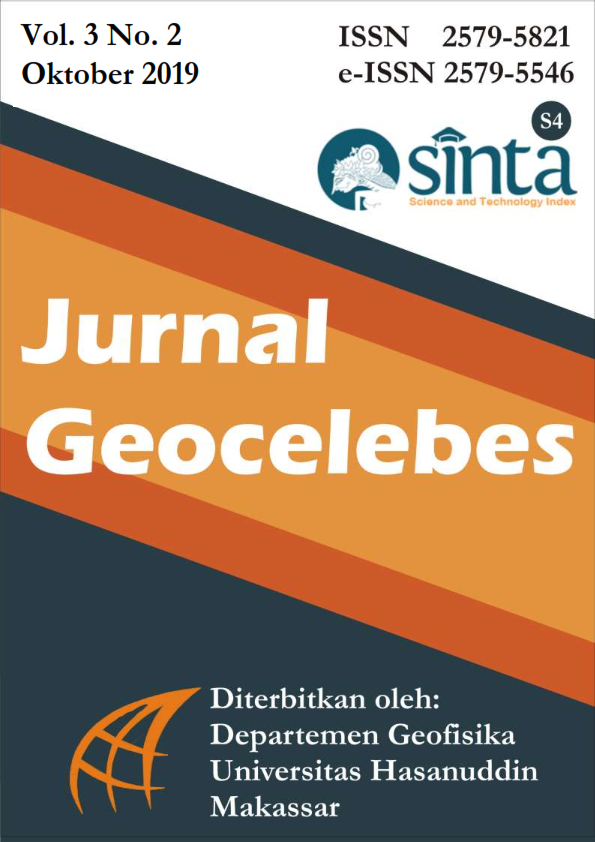PEMODELAN BAWAH PERMUKAAN BANTAR KARET, JAWA BARAT MENGGUNAKAN METODE GRAVITASI
DOI:
https://doi.org/10.20956/geocelebes.v3i2.6689Abstract
Gravity method is one of the geophysical methods that is often used to obtain information about the subsurface through differences density of the rocks around it. Gravity anomaly data used in this study is primary data that has been processed data. Data processing is obtained by reducing gravity observation data until complete bouguer anomaly values. The results of the interpretation of the gravity anomaly show that the types of rocks in subsurface of the study area are peridotite, tuff, riolite and basalt. The rock with the highest density is peridotite with a density value of 3.15 gr/cm3. This is due to the intrusion process to forming peridotite and there are two zones boundaries which have very significant density differences.Downloads
References
Blakely, R.J., 1996, Potential theory in gravity and magnetic applications: Cambridge University Press, New York, 441 p.Kearey, P., Keith, A.K., Vine, F.J. 2009. Global Tectonics. New Jersey: Wiley-Blackwell.Lowrie, W. 2007. Fundamental of Geophysics. Cambridge University Press. Cambridge, United Kingdom.Reynold, J. M., 1997, An Introduction to Applied and Environmental Geophysics, Jhn Wiley and Sons Inc., England.Telford, W. M., Geldart, L. P., Sheriff, R. E., and Keys. D. A., 1990, Applied Geophysics, Cambridge University Press, Cambridge.
Downloads
Published
How to Cite
Issue
Section
License
Authors who publish with this journal agree to the following terms:
- Authors retain copyright and grant the journal right of first publication with the work simultaneously licensed under a Creative Commons Attribution License that allows others to share the work with an acknowledgement of the work's authorship and initial publication in this journal.
- Authors are able to enter into separate, additional contractual arrangements for the non-exclusive distribution of the journal's published version of the work (e.g., post it to an institutional repository or publish it in a book), with an acknowledgement of its initial publication in this journal.
- Authors are permitted and encouraged to post their work online (e.g., in institutional repositories or on their website) prior to and during the submission process, as it can lead to productive exchanges, as well as earlier and greater citation of published work (See The Effect of Open Access).



